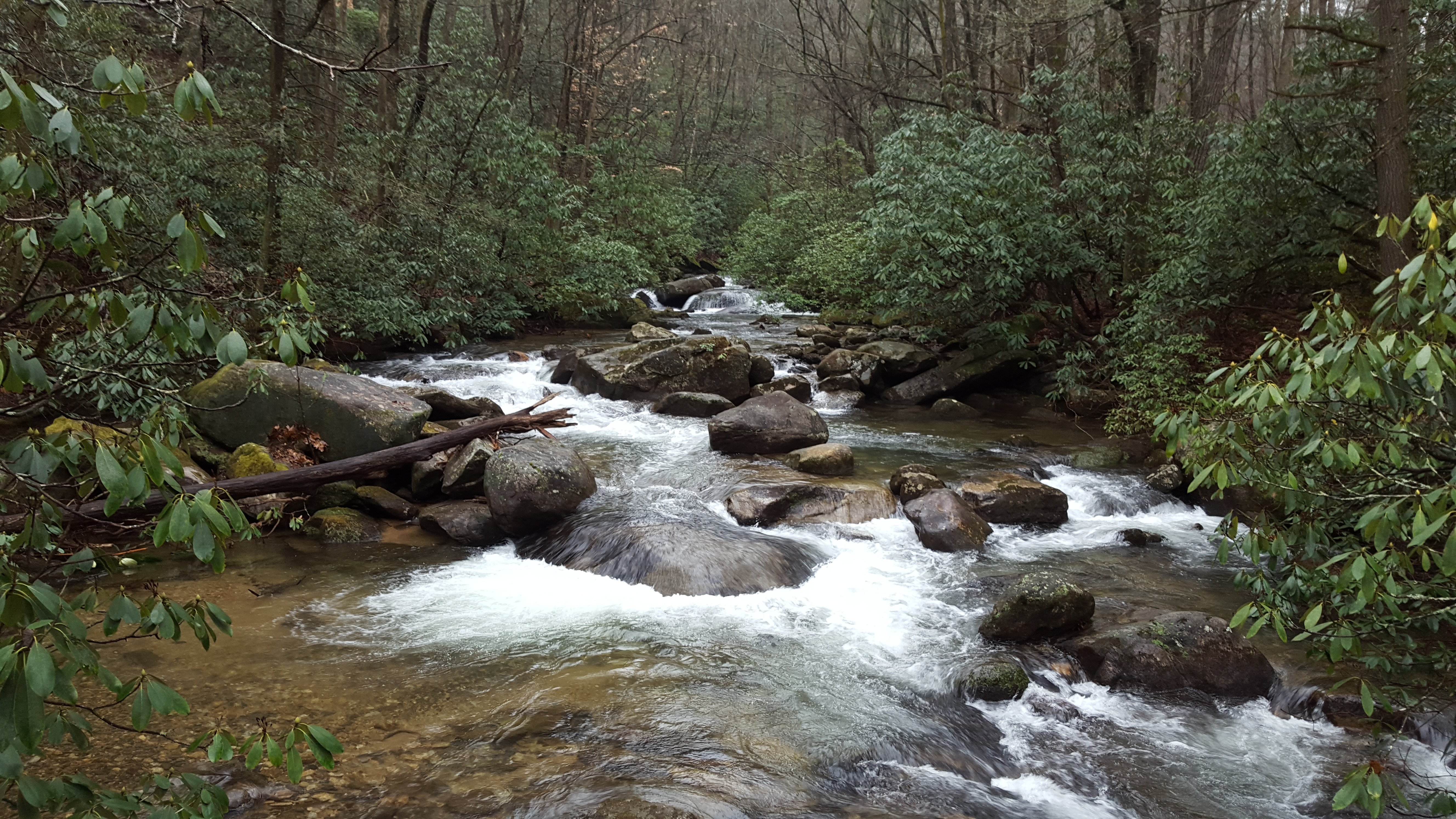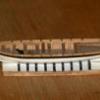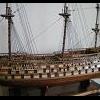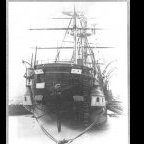Supplies of the Ship Modeler's Handbook are running out. Get your copy NOW before they are gone! Click on photo to order.
×
-
Posts
10,056 -
Joined
-
Last visited
Reputation Activity
-
 ccoyle got a reaction from Canute in Salmson 2 A.2 by ccoyle - FINISHED - WAK - 1/33 - CARD - in markings of aircraft flown by Capt. Arthur J. Coyle, 1st Squadron, US Air Service, Autumn 1918
ccoyle got a reaction from Canute in Salmson 2 A.2 by ccoyle - FINISHED - WAK - 1/33 - CARD - in markings of aircraft flown by Capt. Arthur J. Coyle, 1st Squadron, US Air Service, Autumn 1918
Interesting video of a Salmson being readied for flight. I can plainly see some elements that the kit designer got wrong. 😑
-
 ccoyle got a reaction from SiriusVoyager in Norwegian Sailing Pram by Desertanimal - Model Shipways - Scale 1:12
ccoyle got a reaction from SiriusVoyager in Norwegian Sailing Pram by Desertanimal - Model Shipways - Scale 1:12
Close-up photography is the enemy of being satisfied with a job well done -- it highlights a wealth of tiny mistakes that no one will notice at normal viewing distances. I have to remind myself of this fact all the time.
-
 ccoyle got a reaction from Jack12477 in Salmson 2 A.2 by ccoyle - FINISHED - WAK - 1/33 - CARD - in markings of aircraft flown by Capt. Arthur J. Coyle, 1st Squadron, US Air Service, Autumn 1918
ccoyle got a reaction from Jack12477 in Salmson 2 A.2 by ccoyle - FINISHED - WAK - 1/33 - CARD - in markings of aircraft flown by Capt. Arthur J. Coyle, 1st Squadron, US Air Service, Autumn 1918
Interesting video of a Salmson being readied for flight. I can plainly see some elements that the kit designer got wrong. 😑
-
 ccoyle got a reaction from Dave_E in Salmson 2 A.2 by ccoyle - FINISHED - WAK - 1/33 - CARD - in markings of aircraft flown by Capt. Arthur J. Coyle, 1st Squadron, US Air Service, Autumn 1918
ccoyle got a reaction from Dave_E in Salmson 2 A.2 by ccoyle - FINISHED - WAK - 1/33 - CARD - in markings of aircraft flown by Capt. Arthur J. Coyle, 1st Squadron, US Air Service, Autumn 1918
Interesting video of a Salmson being readied for flight. I can plainly see some elements that the kit designer got wrong. 😑
-

-
 ccoyle reacted to FlyingFish in Vigilance of Brixham (BM 76) by FlyingFish - 1:32
ccoyle reacted to FlyingFish in Vigilance of Brixham (BM 76) by FlyingFish - 1:32
Well it’s been a while – I’ve been away on an extended fishing trip to the famous limestone Lough Sheelin in Ireland to fish the mayfly hatch. It was, as usual, wonderful. It’s a spectacle of nature, and the big fish appear each year to gorge themselves. For those of you stateside it was the Ephemera danica hatch, much like your greendrakes.
The boats are 19’ made locally and designed for drifting broadside downwind as you cast your fly in front of the boat. The electric outboard is the ‘Ghillie’ helping to adjust the drift around points on onto rising fish. They can’t see you coming if you wear a camo buff…
Here’s one of about 6 lbs and we caught some even bigger. They all went back to grow even larger.
So to work and back on topic – I have some catching up to do on Vigilance.
Frames 30-34
These frames rise above the keelson onto the stern deadwood, as shown by the blue dashed bearding line.
The deadwood is then graded down onto the rabbet to allow the planking to sit flush with the keel.
Frame 34 is the last double frame. Frames #35 - #39 heel onto the horns which themselves butt to the aft face of frame 34. These photos are from the yard:
They started by using ply templates to work out the run of the planking onto the counter before making the frames. Then each massive oak pair was winched into place and secured.
My set-up is shown below here, with frames 29 and 30 being dry fitted. The paper template sets the frame heel position, bearding line position and sheer height. The gantry tape aligns the frames athwartships, and the sliding bevel and set square set the beam width and sheer height at the sheer line accordingly. Temporary ribbands hold everything in line, and help to check the frame bevel is faired. If not then adjustments can be made before fixing.
I've found that making frames this way is risky – if they are not right then maybe they can be faired, but more likely a new frame will need to be made. If I was to do this again I'd leave more margin for sanding.
All for now, whilst I slowly work towards the counter timbers.
-

-

-

-
 ccoyle reacted to GeorgeKapas in Ares by GeorgeKapas - FINISHED - 1/144 - Greek brig
ccoyle reacted to GeorgeKapas in Ares by GeorgeKapas - FINISHED - 1/144 - Greek brig
A clearer view after applying the copper plating pattern
-
 ccoyle got a reaction from BLACK VIKING in Salmson 2 A.2 by ccoyle - FINISHED - WAK - 1/33 - CARD - in markings of aircraft flown by Capt. Arthur J. Coyle, 1st Squadron, US Air Service, Autumn 1918
ccoyle got a reaction from BLACK VIKING in Salmson 2 A.2 by ccoyle - FINISHED - WAK - 1/33 - CARD - in markings of aircraft flown by Capt. Arthur J. Coyle, 1st Squadron, US Air Service, Autumn 1918
Added the pilot's headrest and windscreens. The kit provide neither interior frames nor glazing templates for the latter; I made photocopies and used those as templates.
-
 ccoyle reacted to rcweir in Pinas by rcweir - Kolderstok - Scale 1:50 - Cross-Section - Dutch 17th Century ship
ccoyle reacted to rcweir in Pinas by rcweir - Kolderstok - Scale 1:50 - Cross-Section - Dutch 17th Century ship
The weekend work started with installing the four corner upper futtocks, using the jig I put together last weekend. The result was not so good - the planked side (port) was fine, but the two futtocks on the unplanked side were both tilted out slightly from the top of the lower futtocks. So I removed those two offenders and abandoned my jig. Instead, I clamped a couple of boards on the outside of the lower futtocks to give the same level of alignment help that the planked side provides inherently. I made sure of the height by placing a comb where the bottom of the futtocks could rest against it. The result of the second try was excellent: the new structure, turned upside down, rested stably on all four "feet" and the visual alignment of the upper and lower futtocks seemed correct.
This is a good view of a misaligned futtock (though "good" is not the word I used first).
Try #2 was easier and came out better. Notice on the right hand side of the second picture above I'm installing the 2nd futtock from the end so that I can have glue on both sides, and better alignment guides.
Next, I installed the beam shelves for the orlop deck beams, which was pretty straightforward. Alignment checks afterward showed that they were both parallel and at the same height. Whew.
On a real pinas, there is an interior strengthening plank that runs right along the turn of the bilge, called the bilge stringer. In some of Witsen's drawings the bilge stringer is thicker than the ceiling planks and I decided to make mine that way, though it will add a bit of complication later when fitting some knees. I'm making the stringers 3mm x 7mm and installing them on both sides of the model. In the right hand photo below the slightly higher profile of the bilge stringer is more evident. I think the height difference will be very visible when the model is finished.
In the process of finding the stringer locations I discovered that the floors of my model are wider - by 1-2mm - on the unplanked side. How that happened I really don't know: I don't think it's a misplaced keelson (which is where I was measuring from) and I am certain all of the floor timbers are centered on the keel, since they have an engraved reference mark. So probably there was some asymmetry with the placement of the lower futtocks. However it came to happen, it's far too late to fix. And I'm not sure that any bad consequences will follow from it. Though, maybe it has caused the frames at top of the beam shelves to be slightly too far apart: coincidentally or not, I found that the spacing between the frames at the beam shelves was 1.5mm wider than the orlop deck beams are long.
On the other hand, if my frame width at the orlop deck is slightly too great, I'm not the first one this has happened to: I've seen at least one build log of this kit where the photos clearly show the same gap at the beam ends that I have. It's not really a big deal - mostly, a gap there won't be seen, except that it will be very visible at each end of the model, and I don't like that. I considered making replacement beams, but instead decided to put a new facing on the two beams which will be on the ends. So, I glued a new layer of 1/16" basswood to two beams, trimmed the addition to the beam's profile, and then planed off the back of the beam. The result is the original's thickness, but slightly longer on the facing side. When time comes, I'll trim the facings to fit exactly, when viewed from the end. A sharp observer looking down on the undecked side might still notice that those beams are in two parts, but that thought bothers me a lot less than the gap.
A side benefit of the facings is that the mortises for the carlings have been covered over on the exposed side. The kit's method of passing the carlings through the deck beams ensures perfect alignment and looks good, but the through mortise is not prototype practice. Covering up the end openings as I did doesn't prevent me from actually installing carlings between beams exactly as designed, but hides the details from viewers. It's possible that I might get ambitious later and add simulated carling mortises on the beams; that ought to be easy if I can just follow the lines of the through-mortises already present.
In the photos below you can see one end of a modified beam (with its new end untrimmed). Behind the facing, the gap that I want to hide is fairly visible.
The last work for the long weekend was to continue the port side ceiling up to the orlop beam shelf. And I've included one messy shop photo.
Thanks for visiting, and all the encouragement.
Bob
-

-

-

-
 ccoyle got a reaction from rlwhitt in Salmson 2 A.2 by ccoyle - FINISHED - WAK - 1/33 - CARD - in markings of aircraft flown by Capt. Arthur J. Coyle, 1st Squadron, US Air Service, Autumn 1918
ccoyle got a reaction from rlwhitt in Salmson 2 A.2 by ccoyle - FINISHED - WAK - 1/33 - CARD - in markings of aircraft flown by Capt. Arthur J. Coyle, 1st Squadron, US Air Service, Autumn 1918
Empennage is done. I can't give this kit high marks for number and quality of diagrams, not for sufficiency of internal structure. I had to muddle through the former and scratch-build some of the latter, but it turned out okay, I think.
-
 ccoyle reacted to Bill97 in Endeavour by Bill97 - FINISHED - OcCre - 1/54
ccoyle reacted to Bill97 in Endeavour by Bill97 - FINISHED - OcCre - 1/54
I have been not completely satisfied with the upper haul staining I did. I did not feel the grain in the planking showed as much as I had hoped. Finally I bit the bullet and decided to sand it down and redo it. After much work I got all stripped. I then stained the upper section again. It will still receive a satin clear top coat and I will genes to touch up the black on the wales. But I am much more pleased. I also added pins to the bottom of all the pieces I have made that will line the rails. The pin will hopefully reinforce the strength of the glue attachment.
-
 ccoyle reacted to GeorgeKapas in Ares by GeorgeKapas - FINISHED - 1/144 - Greek brig
ccoyle reacted to GeorgeKapas in Ares by GeorgeKapas - FINISHED - 1/144 - Greek brig
More of the same. The method was quite smooth after a while, it will be used in all my 1/144 projects
-
 ccoyle reacted to Jagpilot in HMS Ontario by Jagpilot - MarisStella - 1/48
ccoyle reacted to Jagpilot in HMS Ontario by Jagpilot - MarisStella - 1/48
Long over due update. Lots of outdoor yard work to do. So haven’t had much time to work in the shipyard. Sorry, I crammed a lot of stuff in one post. I got all of the bulkheads glued and I faired the tops of the bulkheads for the gun deck. I used a flexible ruler with sticky back sand paper to get the job done. The kit comes with the choice of using the laser cut deck or planking the laser cut deck with 1x5 mm planks. I chose to plank my deck as I think it will offer a better look. I used basswood planking that I milled myself on my mini table saw. I’ve then cut the planks to length and sanded the ends with my Ultimation sander and cutter. For imitating caulking I used a colored pencil for the end grain on the planks because the ink will suck into the pours and make the ends not as sharp. And a non-bleeding ink archival pen for the long grain. Once the planks were laid and sanded smooth and level I applied linseed oil. Once I have a few coats of linseed oil on, I will treenail it with birch wood toothpicks. I don’t like bamboo toothpicks because the grain is porous . I made a photocopy of the laser cut deck before I applied the planking so I have a reference for the tree nail pattern. I really like how the deck came out with all the variation and color and tones of the basswood. I was thinking of using Maple on the main upper deck. But I am thinking I will not have as much variation and wood tones as the basswood. I guess I’ll cross that bridge when I get there. Sorry for any typos as I am doing this post on an IPhone at 11:30 at night
-
 ccoyle got a reaction from Javlin in Salmson 2 A.2 by ccoyle - FINISHED - WAK - 1/33 - CARD - in markings of aircraft flown by Capt. Arthur J. Coyle, 1st Squadron, US Air Service, Autumn 1918
ccoyle got a reaction from Javlin in Salmson 2 A.2 by ccoyle - FINISHED - WAK - 1/33 - CARD - in markings of aircraft flown by Capt. Arthur J. Coyle, 1st Squadron, US Air Service, Autumn 1918
Empennage is done. I can't give this kit high marks for number and quality of diagrams, not for sufficiency of internal structure. I had to muddle through the former and scratch-build some of the latter, but it turned out okay, I think.
-
 ccoyle got a reaction from tmj in Speeljacht by ccoyle - FINISHED - Seahorse - 1/50 - CARD - 17th-Century Dutch Pleasure Boat
ccoyle got a reaction from tmj in Speeljacht by ccoyle - FINISHED - Seahorse - 1/50 - CARD - 17th-Century Dutch Pleasure Boat
Yes, yes, I know -- this will be yet a third concurrently running project. And actually, this project will not really begin for at least another week to ten days, because I just ordered the kit today, and it has to wing its way over here from Poland. So, first question is: Why this project? For several reasons:
I have long been wanting to try my hand at a card sailing vessel. This looks like a great kit for that purpose. The rig is super simple. It is hot off the presses. I want to be among the very first to build one of these (the urge to be an 'early adopter') -- hence the slightly premature rush to start this log.
I will do a deep dive into the kit contents once it gets here, but for now here's a shot of the kit cover:
And a contemporary drawing of the subject by Willem van de Velde.
I ordered the discounted set for the model, which includes the kit, laser-cut parts, mast dowels, and printed sails. In total, this set me back a whopping US$30.62, including shipping, which is about half what it would cost to acquire a single Halinski kit along with its bells and whistles. I have remarked before on the value of ordering directly from Tomek at his website.
And now . . . we wait. In the meantime, I will try to get as much done on the Salmson as I can before the next project arrives.
That's it for now!
-
 ccoyle got a reaction from Danstream in Salmson 2 A.2 by ccoyle - FINISHED - WAK - 1/33 - CARD - in markings of aircraft flown by Capt. Arthur J. Coyle, 1st Squadron, US Air Service, Autumn 1918
ccoyle got a reaction from Danstream in Salmson 2 A.2 by ccoyle - FINISHED - WAK - 1/33 - CARD - in markings of aircraft flown by Capt. Arthur J. Coyle, 1st Squadron, US Air Service, Autumn 1918
Empennage is done. I can't give this kit high marks for number and quality of diagrams, not for sufficiency of internal structure. I had to muddle through the former and scratch-build some of the latter, but it turned out okay, I think.
-
 ccoyle got a reaction from Rik Thistle in Salmson 2 A.2 by ccoyle - FINISHED - WAK - 1/33 - CARD - in markings of aircraft flown by Capt. Arthur J. Coyle, 1st Squadron, US Air Service, Autumn 1918
ccoyle got a reaction from Rik Thistle in Salmson 2 A.2 by ccoyle - FINISHED - WAK - 1/33 - CARD - in markings of aircraft flown by Capt. Arthur J. Coyle, 1st Squadron, US Air Service, Autumn 1918
Empennage is done. I can't give this kit high marks for number and quality of diagrams, not for sufficiency of internal structure. I had to muddle through the former and scratch-build some of the latter, but it turned out okay, I think.
-
 ccoyle got a reaction from druxey in Salmson 2 A.2 by ccoyle - FINISHED - WAK - 1/33 - CARD - in markings of aircraft flown by Capt. Arthur J. Coyle, 1st Squadron, US Air Service, Autumn 1918
ccoyle got a reaction from druxey in Salmson 2 A.2 by ccoyle - FINISHED - WAK - 1/33 - CARD - in markings of aircraft flown by Capt. Arthur J. Coyle, 1st Squadron, US Air Service, Autumn 1918
Empennage is done. I can't give this kit high marks for number and quality of diagrams, not for sufficiency of internal structure. I had to muddle through the former and scratch-build some of the latter, but it turned out okay, I think.
-
 ccoyle got a reaction from king derelict in Salmson 2 A.2 by ccoyle - FINISHED - WAK - 1/33 - CARD - in markings of aircraft flown by Capt. Arthur J. Coyle, 1st Squadron, US Air Service, Autumn 1918
ccoyle got a reaction from king derelict in Salmson 2 A.2 by ccoyle - FINISHED - WAK - 1/33 - CARD - in markings of aircraft flown by Capt. Arthur J. Coyle, 1st Squadron, US Air Service, Autumn 1918
Empennage is done. I can't give this kit high marks for number and quality of diagrams, not for sufficiency of internal structure. I had to muddle through the former and scratch-build some of the latter, but it turned out okay, I think.














.thumb.jpg.c459ce4140b54c12eddb8eedfd446df3.jpg)
